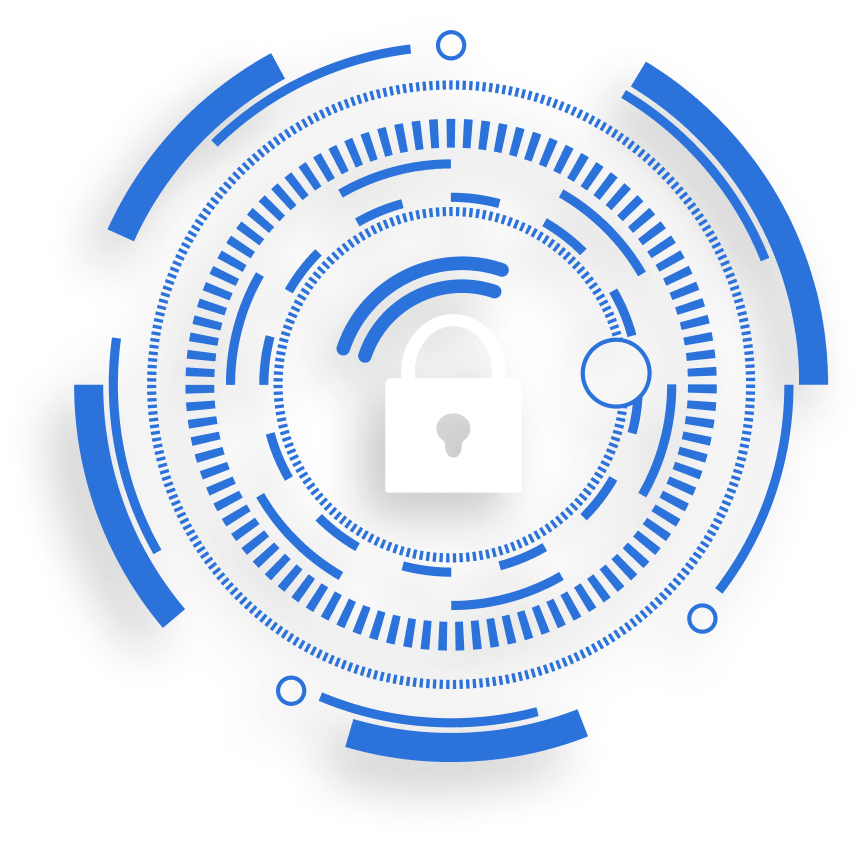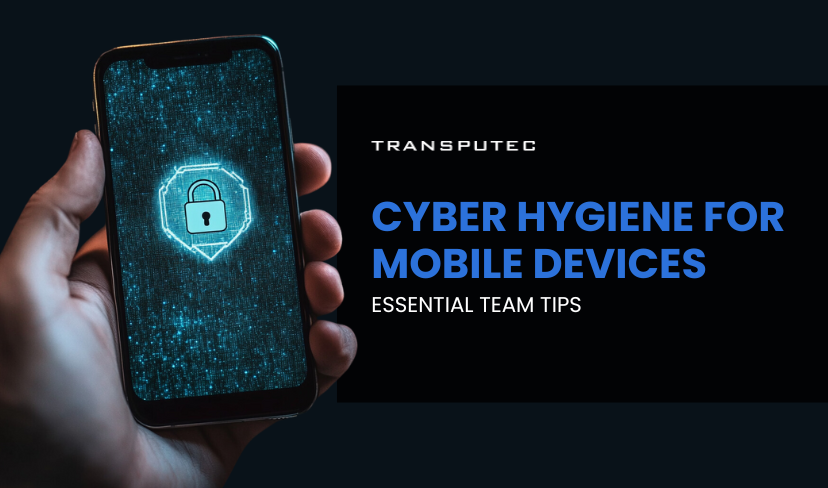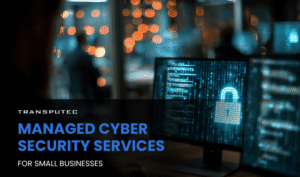Written by KRITIKA SINHA | MARKETING
With employees increasingly reliant on mobile devices for remote work and everyday business operations, maintaining effective cyber hygiene for mobile devices is essential. But cyber hygiene for mobile devices goes beyond merely setting a password; it includes a range of practices that safeguard sensitive business data, protect against malware, and ensure compliance with security protocols. This guide from Transputec is here to help your team maintain strong cyber hygiene, ensuring a secure mobile environment and reducing risks from cyber threats.
Why Choose Transputec for Cyber Hygiene Training?
Partnering with an experienced cybersecurity provider like Transputec can be instrumental in maintaining high standards of cyber hygiene for mobile devices. Our team offers tailored solutions that address your specific cybersecurity needs, ensuring a proactive approach that mitigates risks while enhancing the overall security culture.
With our expertise, you’ll gain peace of mind knowing your team is equipped to manage and reduce cybersecurity threats on all mobile devices.
What Is Cyber Hygiene for Mobile Devices?
Cyber hygiene for mobile devices involves implementing security protocols, tools, and user practices that protect devices from malware, phishing attacks, unauthorised access, and other cyber risks. As mobile device use grows, so does the complexity of mobile attacks, making cyber hygiene for mobile devices essential for every business. Effective cyber hygiene practices prevent data breaches and maintain business continuity, protecting sensitive company data wherever it resides.
The Importance of Cyber Hygiene for Mobile Devices
Mobile devices often contain a wealth of sensitive information, from corporate emails to financial data. Without proper cyber hygiene, these devices can become vulnerable entry points for cybercriminals. Implementing strong cyber hygiene for mobile devices helps:
- Protect sensitive corporate and personal data
- Prevent unauthorised access to company networks
- Reduce the risk of malware infections
- Ensure compliance with data protection regulations
Protect your Business 24/7 with Transputec!
Our Managed SOC Cost Calculator estimates potential expenses for security tools and other costs based on your requirements.
Top Cyber Hygiene Tips for Mobile Devices
To establish robust cyber hygiene for mobile devices within your team, consider the following practical steps:
1. Enforce Strong Passwords and Biometric Security
A strong password is the first line of defence for any device. Encourage employees to use unique, complex passwords for all apps and systems, ideally supplemented by biometric security measures such as facial recognition or fingerprints. By making password policies a part of cyber hygiene for mobile devices, your team will have a secure foundation for all mobile interactions.
2. Implement Multi-Factor Authentication (MFA)
Multi-factor authentication (MFA) adds another layer of protection, making it harder for attackers to access data with just a password. When included as part of your cyber hygiene for mobile devices strategy, MFA provides an added security measure for sensitive applications, protecting your business from unauthorised access.
3. Enable Automatic Updates
Many cyberattacks exploit outdated software. Ensure your team enables automatic updates for operating systems and apps, as these updates often include critical security patches. Keeping software up-to-date is a cornerstone of effective cyber hygiene for mobile devices and minimises vulnerabilities that hackers can exploit.
4. Use Secure Wi-Fi and Avoid Public Networks
Remind employees to avoid public Wi-Fi when accessing sensitive company data. Unsecured networks can expose devices to “man-in-the-middle” attacks, where hackers intercept data. Encourage the use of virtual private networks (VPNs) as part of cyber hygiene for mobile devices to protect data during remote work or travel.
5. Implement Data Encryption
Encryption transforms data into an unreadable format, making it useless to anyone without the decryption key. Implementing end-to-end encryption for both stored and transmitted data is a best practice in cyber hygiene for mobile devices. Even if the device is lost or stolen, encrypted data remains protected.
6. Educate on Phishing and Malware Risks
Phishing attacks and malware are common mobile threats, often disguised as legitimate links or files. A strong cyber hygiene for mobile devices program includes regular training on recognising suspicious links, apps, and attachments. By building awareness, you can reduce the risk of accidental malware installations.
7. Remotely Track and Wipe Lost Devices
Lost or stolen devices can lead to unauthorised access to sensitive information. Having a remote tracking and wiping tool as part of your cyber hygiene for mobile devices strategy helps ensure data security even if the device is compromised.
Building a Cyber Hygiene Culture for Mobile Devices
Incorporating cyber hygiene for mobile devices into your company’s culture involves more than one-time training. Here’s how to develop long-lasting habits:
- Regular Security Training: Schedule ongoing training sessions to keep employees updated on emerging mobile security threats and best practices.
- Establish Clear Guidelines: Develop easy-to-understand cyber hygiene policies for mobile devices, including guidelines on password protection, data access, and acceptable device usage.
- Monitor Compliance: Regularly assess adherence to cyber hygiene protocols to identify areas for improvement and reinforce security measures.
Protect Your Mobile Environment with Cyber Hygiene Best Practices
Investing in cyber hygiene for mobile devices is critical to protecting your business’s sensitive information and maintaining operational continuity. By implementing these top tips, your team will have a strong defence against cyber threats, keeping your business data safe no matter where it’s accessed. Get in touch with a Transputec expert today to develop a customised cyber hygiene strategy that meets your organisation’s unique needs and takes your mobile security to the next level.
Ready to strengthen your mobile security? Contact us today to get started with a Transputec expert!

Secure Your Business!
Ready to explore how we can enhance your security posture? Contact us today to speak with one of our experts.
FAQs
What is cyber hygiene for mobile devices, and why is it important?
Cyber hygiene for mobile devices refers to the set of practices and protocols designed to protect mobile devices from security threats. It’s crucial for safeguarding sensitive company data and preventing unauthorised access, especially as remote work and mobile use increase.
How can I improve cyber hygiene on my smartphone?
Improving cyber hygiene includes setting strong passwords, enabling MFA, updating software regularly, and avoiding unsecured Wi-Fi networks. Additionally, be cautious of phishing links and ensure data encryption is enabled.
Why should I avoid using public Wi-Fi networks for work?
Public Wi-Fi networks are often unsecured, making it easy for hackers to intercept data transmitted over them. For secure mobile device hygiene, use a VPN when connecting to public Wi-Fi or avoid these networks altogether for business activities.
What should I do if my mobile device is lost or stolen?
Use remote tracking and wiping tools to secure data on lost devices. If possible, enable this feature in advance to help locate the device or remotely erase data to prevent unauthorised access.
How often should employees receive cyber hygiene training?
Ideally, employees should receive cyber hygiene training every 6 to 12 months, with additional sessions if there are major updates in security protocols or mobile threats. Regular training reinforces good habits and keeps the team updated on the latest risks and best practices.







